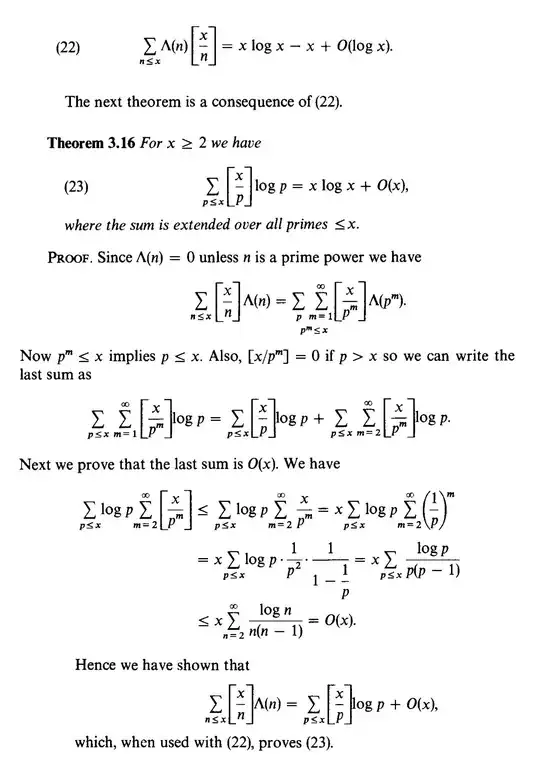The below texts are from the book Introduction to Analytic Number Theory by Apostol:
I have two questions which I couldn't find solutions for them:
$1-$ According to Thm 3.16., $\sum_{n\le x} \Lambda(n) \Big[ \dfrac{x}{n} \Big] = \sum_{p\le x} \ln(p) \Big[ \dfrac{x}{p} \Big] + \sum_{p\le x} \sum_{m=2}^{\infty} \ln(p) \Big[ \dfrac{x}{p^m} \Big] = \sum_{p\le x} \ln(p) \Big[ \dfrac{x}{p} \Big] + O(x),$ so by Eq. (22) we have $x \ln(x) - x + O(\ln (x)) = \sum_{p\le x} \ln(p) \Big[ \dfrac{x}{p} \Big] + O(x),$ so $x \ln(x) + O(\ln (x)) + O(x) = \sum_{p\le x} \ln(p) \Big[ \dfrac{x}{p} \Big],$ so if the Eq. (23) is true then it implies that the book has considered $O(\ln (x)) + O(x) = O(x)$ but it is not true since $O(\ln (x)) + O(x) = O(\ln (x)).$ Am I wrong?
$2-$ How to prove that the sum $\sum_{n=2}^{\infty} \dfrac{\ln(n)}{n(n-1)}$ is finite?
